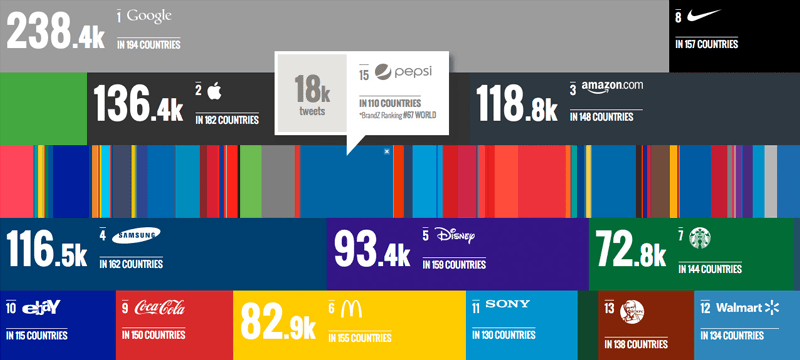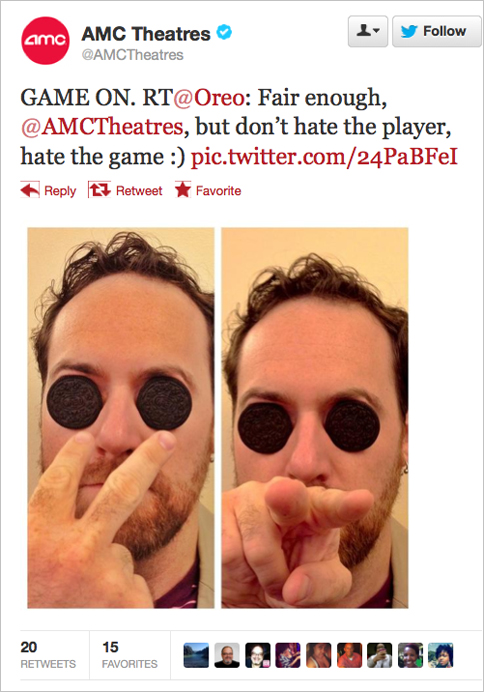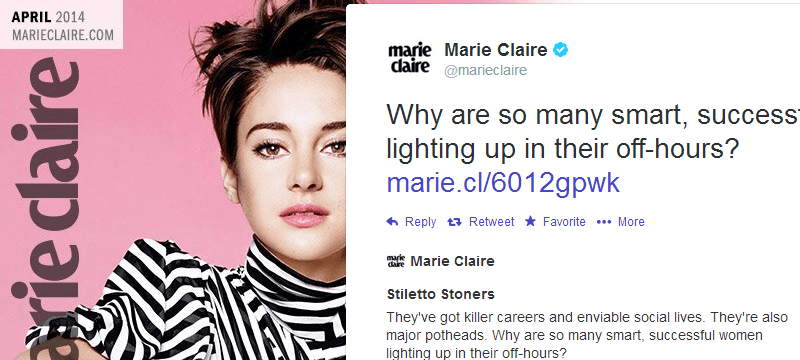BLOG
How to produce content that gets shared on Twitter
Once upon a time, a business’s online presence consisted solely of a website.
On that website, you’d find most of the basic information you’d need; like the company’s products or services, if not their mission, a few statistics, and possibly their history. If they wanted to grab the public’s attention, they’d invest in TV or print ads (and maybe celebrity endorsements, too).
For the most part, those methods were tried and tested and proven true.
But in the social media boom of the twenty-first century, all that’s drastically changed.
Social Media and Its Impact on Businesses
Remember using Friendster? Or MySpace?
We don’t either.
Those two used to rule the internet, when it came to social networking, but they’ve since been replaced with more “hip” and interactive sites. Think Facebook, with all the ways you can respond to a user’s content, or Instagram.
Businesses have spotted, and rightly enough, leaped upon the opportunity to directly interact with their audience. They’ve found that the simple act of posting a witty status or opening up a poll on their Facebook page draws customer engagement — and with this engagement, a greater awareness of their brand.
One social media service, in particular, is the go-to platform for companies wanting to grow a following.
That service is Twitter.

What Makes Twitter so Special?
Twitter’s simple to use: just create a 140-character “tweet,” hit send, and wait for reactions.
Perhaps that explains why it’s amassed an astounding 500, 000, 000 users?
The site’s also incorporated a wide variety of features in the eight years since its creation, such as its own photo sharing service, and the ability to link Twitter posts to other social media accounts. There’s no limits on who can see what, and there’s a wide range of ways in which a company can use hashtags to draw user attention.
Between the speed at which a message can be posted, and the vast database of users to be tapped, you can see why businesses use Twitter as their primary way to reach out to customers: it’s versatile, far-reaching, and efficient.
Which Tweets Gain More Popularity?
Now that you know a little more on why Twitter is so popular, you can post whatever content you like to get attention, right? Isn’t it a free-for-all out there?
Wrong.
The type of content you post has a huge impact on how much it will be shared by your followers. A study analyzing the behavior of 1000 Twitter users found that certain techniques can maximize the popularity of your tweets. Bear in mind – there’s no hard and fast way to “win” at Twitter, but there’s a sure way to get bloody good at using it.
The basic guidelines when you produce content?
- Avoid memes. There’s no such thing as an internet user that hasn’t encountered a meme. But despite their widespread popularity, they don’t perform very well on Twitter. As a business, it doesn’t enhance your image if you’re just another meme in the crowd. Yes — some of your followers may find it amusing, but that doesn’t guarantee high quality traffic, and doesn’t necessarily lead to conversions either.

- Use videos sparingly. Twitter’s popularity is partly due to how it takes very little time to read through numerous posts. By posting a video on Twitter, you’re asking your audience to stop, and take the time to watch what you’ve just posted. It’s time-consuming. You don’t want to be time-consuming. They’ll likely just move onto your next tweet. Those who do watch your video, however have a 49% higher chance of adding the video to their favorites, in comparison to the chances they have of adding an image to their favourites. (There are so many of those, after all.)
- Our advice? Make sure the vid’s a good one.

- Creative and funny images can boost branding. Images get up to 128% more retweets than videos, and are far easier to create than a minute-something movie, but you’ve got to consider the kind of images you post. More than half the images that perform well on Twitter are humor-based. Understandably, right? Take advantage of the ways in which you can tie your corporate band into a funny image. Better still if your current advertising campaign’s already funny. Who doesn’t love a company that can laugh at itself?Case in point: Oreo and AMC Cinemas fake scuffle on Twitter drew attention from the delighted media, but more importantly, it concreted their sense of brand personality as quirky in their Twitter followers’ minds. Credit’s got to go to the man from Oreo who put cookies on his eyes and took a selfie, pointing warningly at the camera all the while: that’s social media genius at its best.

- Add image quotes that showcase your brand’s philosophy. It’s not surprising that quotes often get a lot of retweets, no matter whether they’re funny, inspirational, or enlightening — sometimes, something’s been expressed so simply before that It needs no rewording. Twitter profiles that often tweet quotes also tend to get up to 43% more followers. For businesses, the best way to take advantage of tweeting quotes is by creating typography for the quote, which can then can be integrated into a picture with your brand logo on it. That’ll get your followers to associate your logo with the quote, no matter who it comes from. ‘Sides, it’ll look like a pretty package too – and who wouldn’t want to retweet an appealing graphic?

- Text tweets with links are more effective than images and videos combined. You’d expect tweets with links to do well in it, wouldn’t you? You’d be right. 65% of all tweets contain a link. These tweets get retweeted 86% times more than your regular plain-text tweet. It’s an easy thing to pop a link to your store or services and drive traffic – and sales! – this way.
- Lists and instructional content get more retweets. Links may be effective on Twitter, but if they lead to how-to and list articles, that’s even better. Tweets that provide quick, informative articles get three times more retweets than other text content. If you find that your company has a wealth of information to share, tips, or ideas that can be listed, promoting them on Twitter could be the most effective way of generating traffic back to your site.

- Ask questions. It’s in our nature to want conversation. On Twitter, where customer and company are on a level playing ground, you’re likelier still to get a proper response. You want more than just retweets and favorites: asking a question in your tweet will prompt involvement. It’ll give your audience something to think about. It’s even possibly for you to slyly promote products or new features, by asking customers what they prefer.
Sure, the online community may sometimes be fickle and unpredictable – and certainly like to think of themselves as fickle and unpredictable — but they’re not as unpredictable as they like to think and their behavior on social media can provide businesses with incredible insight to their market.
Try rotating between the above pointers, and watch as your base of Twitter followers blossoms.











